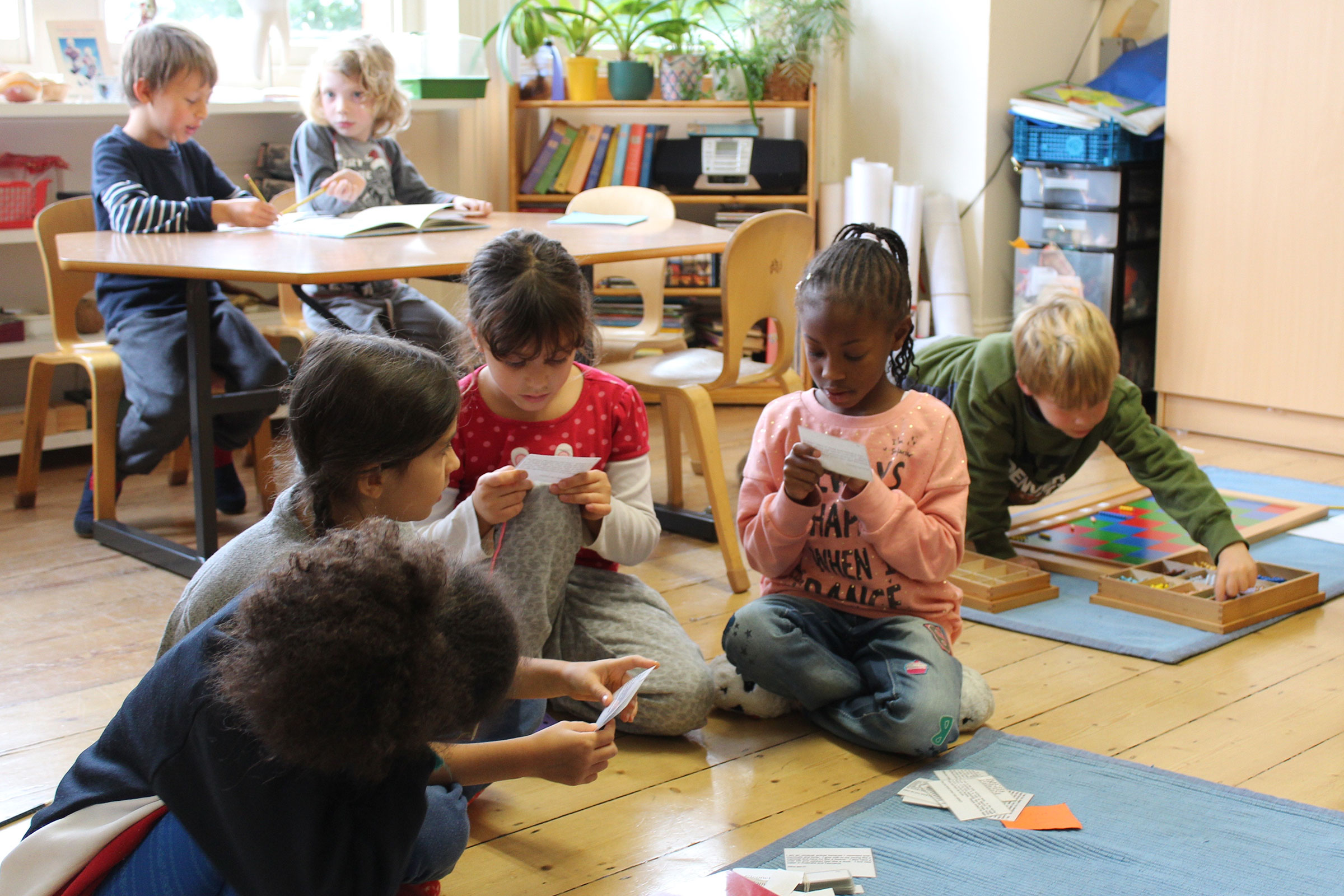First of all, the structure of the school is critical. Environments must have the full age range of children (2 months to Walking well; 14/15 months to 2.5 – 3 years; 2.5-3 – 6+ years; either 6–12-year-olds or 6–9 and 9–12 year-olds; 12–15 and 15–18-year-olds.
There also must be a class size and adult-child ratio that is appropriate for the developmental stage: Nido: 9–10 infants with 3 adults; Infant Community: 12 children with 2 adults; 2.5–6+: 30–35 children with 2 adults; 6-12: 30–35 children with 2 adults; 6–9 & 9–12 also 30–35 children with 2 adults; 12–15: 20 children with a number of part-time adult specialists and 1 or 2 full-time staff.
Additionally, the environments must reflect the full age range of materials as offered on an AMI course. The number of days per week depends somewhat on the country but for children under 2.5: a minimum of 4 consecutive days; for 2.5–6+: a minimum of 4.5 days per week; for 6–12 and 6–9 & 9–12: 5 days per week and for 12–15 & 15–18: 5 days per week.
These structural details support the functioning of a Montessori School. Children follow their own developmental paths and interests, with material instructions provided by the AMI-trained adult. There are very few adult-imposed schedules other than arrival, going home and perhaps lunch. Otherwise, a normal day follows the children’s interests and a general plan created by the trained adult, depending somewhat on the age group.
